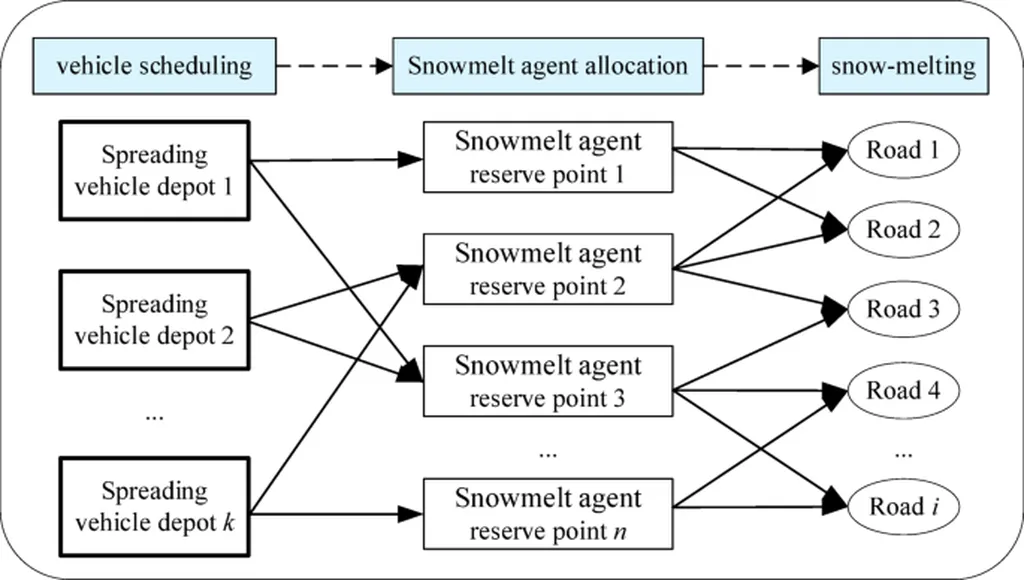In the midst of a snow and ice disaster, cities often face a daunting challenge: how to efficiently allocate snowmelt agents to keep roads clear and safe. This is a problem that Fuyou Tan, a researcher from the School of Transportation and Logistics Engineering at Wuhan University of Technology, has been tackling. His recent study, published in the journal ‘Scientific Reports’ (which translates to ‘Nature Research Reports’ in English), offers a novel approach to this pressing issue.
Tan and his team have developed a multi-objective collaborative optimization approach to address the contradiction between surging demand and resource misallocation during snow and ice disasters. In simpler terms, they’ve created a system to help cities distribute snowmelt agents more effectively.
The researchers developed a snowmelt agent demand formula based on snowfall intensity, road characteristics, and spreading standards. They then deconstructed the three-tier allocation network of vehicle depots, snowmelt agent reserve points, and snow-covered roads, embedding mixed time windows and road priorities. This model aims to minimize total timeliness, time penalty costs, and supply rate discrepancies.
To achieve this, Tan and his team proposed an improved multi-objective grasshopper optimization algorithm (IMOGOA). This algorithm integrates a population guidance strategy and cosine-adaptive parameters to improve optimization performance. The results showed that the Pareto solution set obtained by IMOGOA outperformed those of comparable algorithms.
In a case study of Weihai City, the researchers found that under the optimal time penalty plan, 100% of demand on primary roads was satisfied, while secondary roads achieved a 26.7% coverage rate. “This research enables precise emergency resource scheduling and offers an effective solution for improving the resilience of urban transportation lifelines,” Tan explained.
So, what does this mean for the maritime sector? Well, efficient road transportation is crucial for the smooth operation of ports and the movement of goods. By improving the resilience of urban transportation lifelines, this research could indirectly benefit the maritime industry by ensuring that goods can be transported more efficiently, even in harsh weather conditions.
Moreover, the optimization algorithm developed by Tan and his team could be adapted for use in other areas, such as maritime logistics. For instance, it could be used to optimize the allocation of resources in ports or the scheduling of ships. This could lead to significant cost savings and improved efficiency for maritime companies.
In conclusion, Tan’s research offers a promising solution to a common problem faced by cities during snow and ice disasters. By improving the efficiency of snowmelt agent allocation, it could also bring significant benefits to the maritime sector. As Tan puts it, “This research enables precise emergency resource scheduling and offers an effective solution for improving the resilience of urban transportation lifelines.” And that’s good news for everyone, from city dwellers to maritime professionals.

